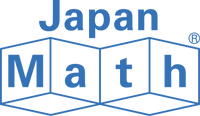
Contrary to the way many of us were taught growing up, there isn’t just one way to learn math. In fact, there are many different math programs and curricula available, especially now that math strategies from other countries are being introduced in the U.S. school system. Since our founding, we’ve met many educators who asked us a similar question:
“What’s the difference between Japan Math and Singapore Math?”
It’s a good question! Many people might not realize just how different these two teaching techniques could be. In this article, we would love to share with you why we believe Japan Math brings something new, different and valuable to the table.
First Things First
Before we jump into the differences, let’s look at the similarities.
- Japan Math and Singapore Math are both designed to be a focused and cohesive math curriculum
- Both are built to adhere to U.S. Common Core standards and are ready to be implemented into any U.S. classroom
- The two programs both use manipulatives, or physical math tools for hands-on learning
As you can see, the two programs are similar in their general principles and standards, which triggers the question asking for the differences.
Here’s a hidden similarity masking as a difference: Singapore Math was first introduced to the U.S. in 1998, which may be why the name sounds familiar. Although Japan Math was founded in the U.S. in 2015, we're actually a subsidiary of a leading provider of learning materials in Japan that was founded in 1933. While we may be new to the U.S., our math program has been proven successful for over 80 years in Japan. We’ve been around a while! That’s why we are so excited to have this trusted program to benefit U.S. students.
What’s Different?
So, what’s the difference between these two programs? Well, it’s a little like comparing apples and oranges. By name, Singapore Math and Japan Math may sound similar, but they’re actually quite different.
Japan Math has a very unique approach to math education that’s not found in other countries. Even though Singapore Math sounds like it would be a curriculum specific to Singapore, it’s actually quite similar to those of China and Korea.
Singapore Math is also more of a brand name, meaning that the content of the program is not closely related to the actual methods used in Singapore. Japan Math’s curriculum is a user-friendly version of the actual curriculum used in Japan, created specifically to allow for a seamless transition for American students.
Now, here’s how Japan Math’s content and curriculum varies greatly from that of its competitors:
- Problem-Solving
The main aspect that makes Japan Math’s curriculum stand out is how we’re asking children to learn. With Japan Math’s technique, we are encouraging classrooms to step away from rote memorization or simply “cramming” information as a way of learning.
Instead, Japan Math focuses on strengthening problem-solving proficiency that gives students the foundational skills to tackle any equation.
- Ownership
In Japan, students are each given their own math book (as opposed to a rented text book) for which they are responsible for the year. Writing their name on the front page, recording their thoughts as they work through the lessons, and having a written record of their successes –creates a sense of ownership for the student, more so than a rented textbook would.
Taking inspiration from this, we have designed our curriculum in a lesson book format, in which students can write in their thought processes and answers. As the student progresses through the year, their lesson book becomes a journal of their learning and accomplishments, which can be kept throughout their academic career as a reference.
- Try, Understand, Master, Apply
The biggest difference we see between Singapore Math and Japan Math is our overall academic approach. The most important of these? Our very first step: Try.
When starting a new unit, Japan Math gives our students a problem that requires concepts that they have not been taught yet. Knowing this, we’re asking our students to see if they can work together with their classmates to find a solution using the skills they have learned previously in a new or different way.
This first step of “Try” encourages students to remember that the concepts they’ve learned are versatile and that they are capable of solving new problems with the skills they already have.
After a student tries a problem, our program moves onto the next steps, “Understand, Apply, and Master,” where they will learn the new unit’s concept, apply it to several different types of problems, and demonstrate their mastery of it. By ensuring a mastery of foundational problem-solving skills in each lesson, this gives students the confidence to once again try a new and harder problem in the next unit.
With Japan Math, your students will not only have a better understanding of mathematical concepts but an enthusiasm for learning and strong problem-solving skills for life.
If you’re interested in learning more about Japan Math and how you can add us to your curriculum, contact us here!
